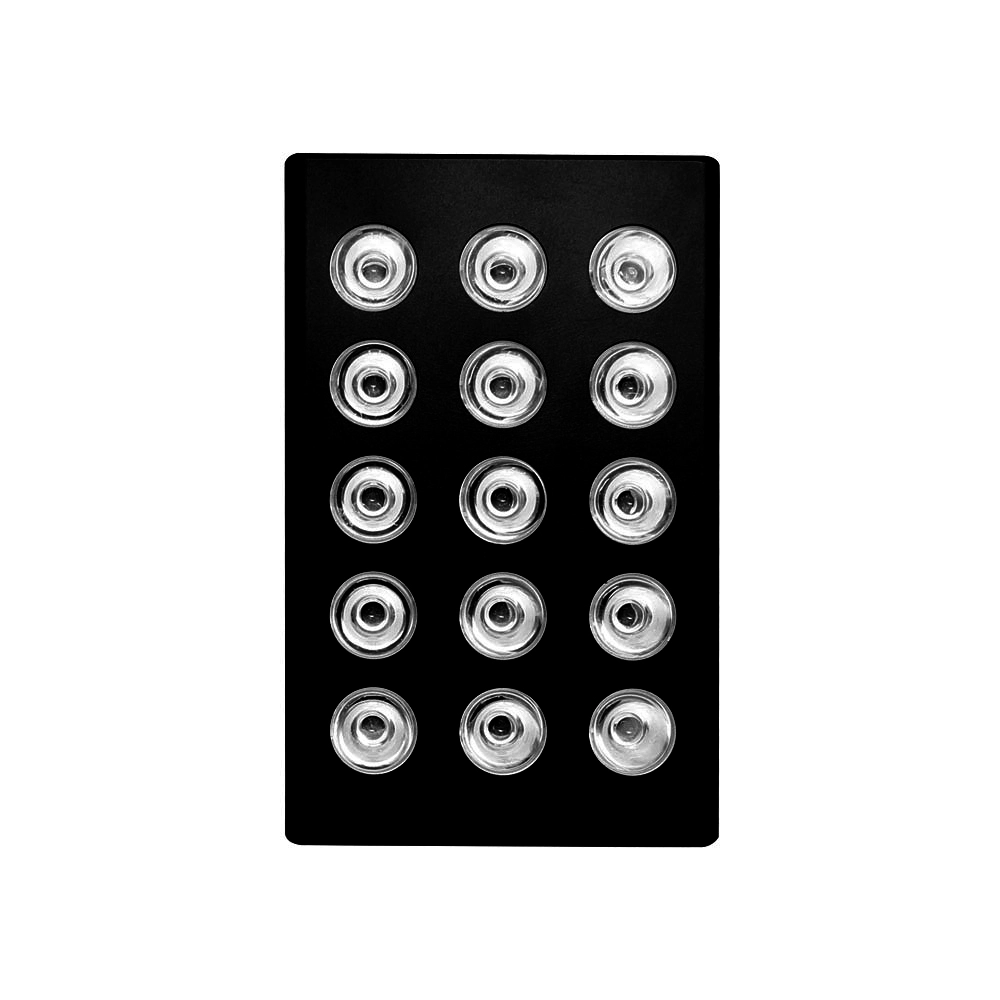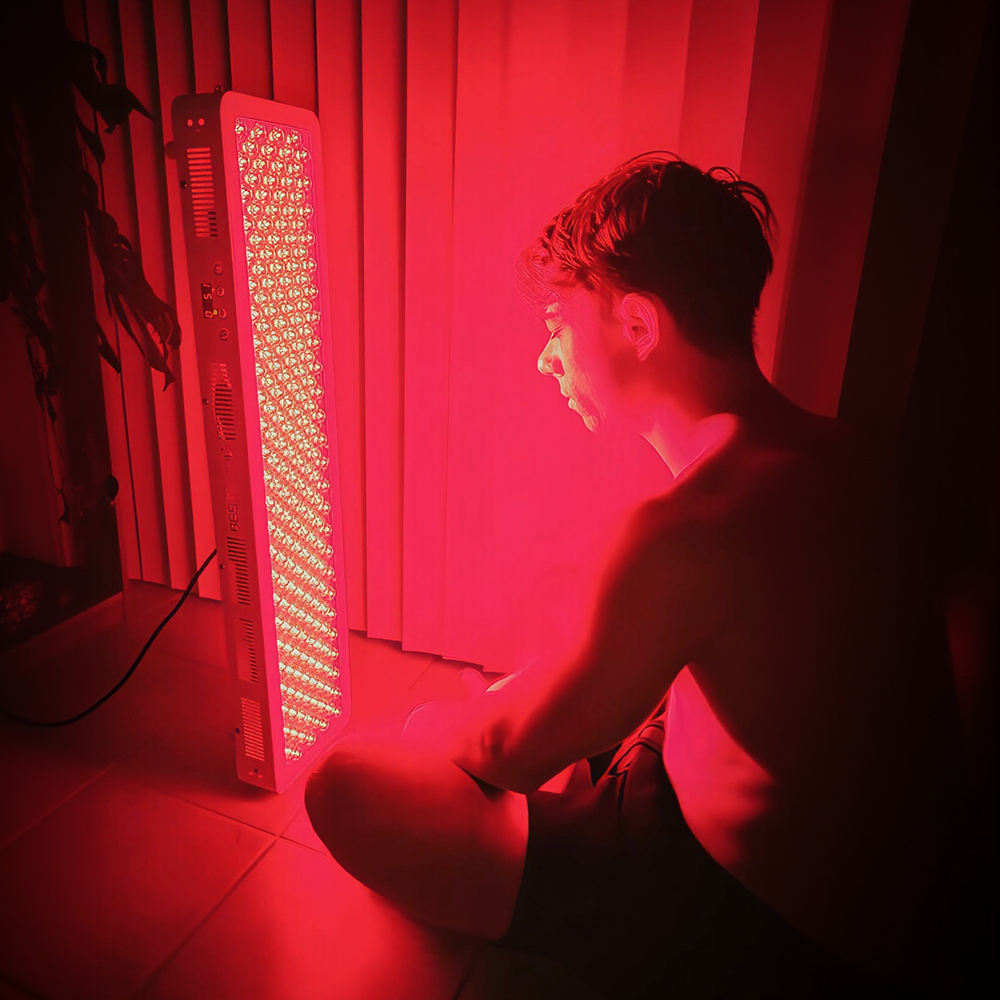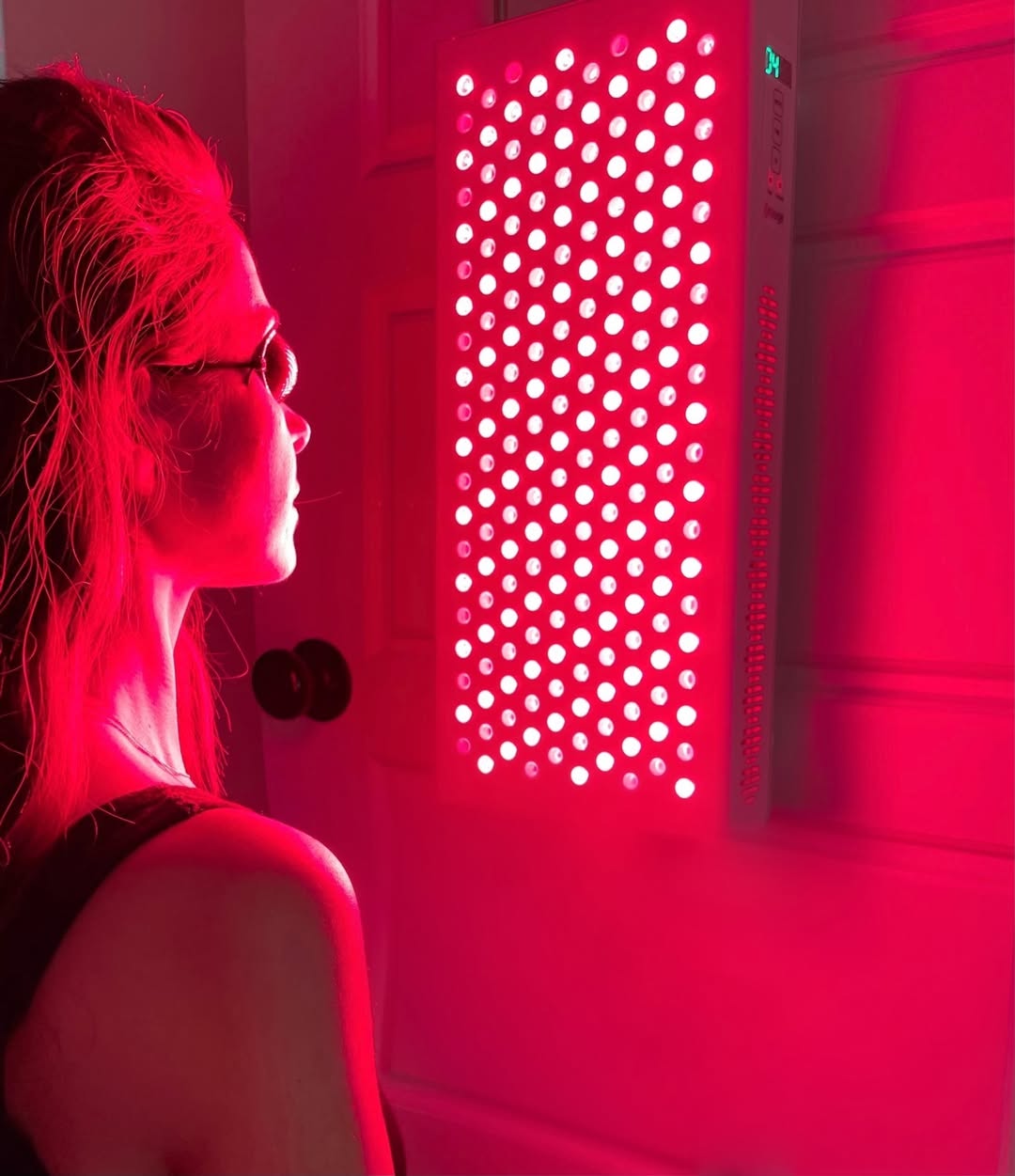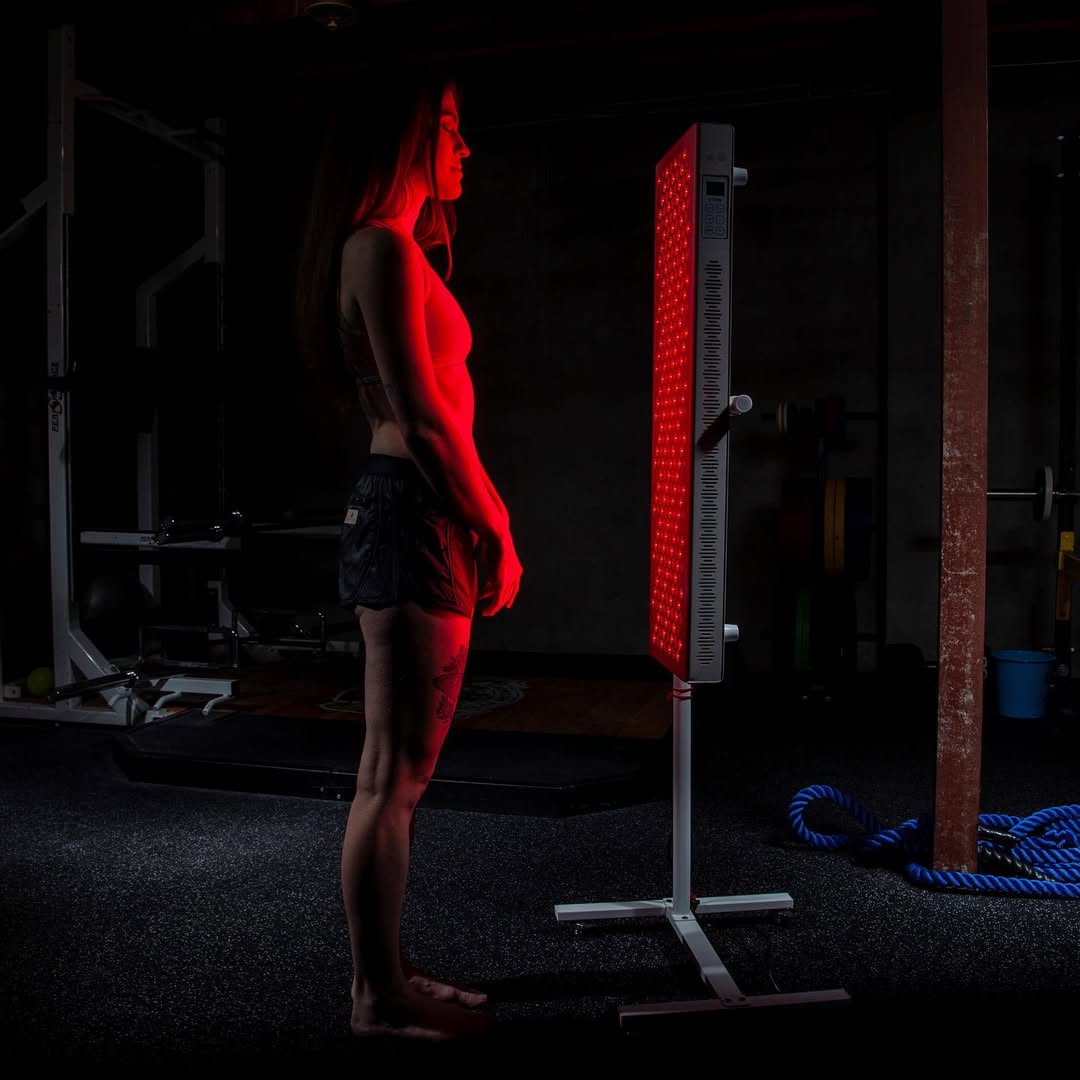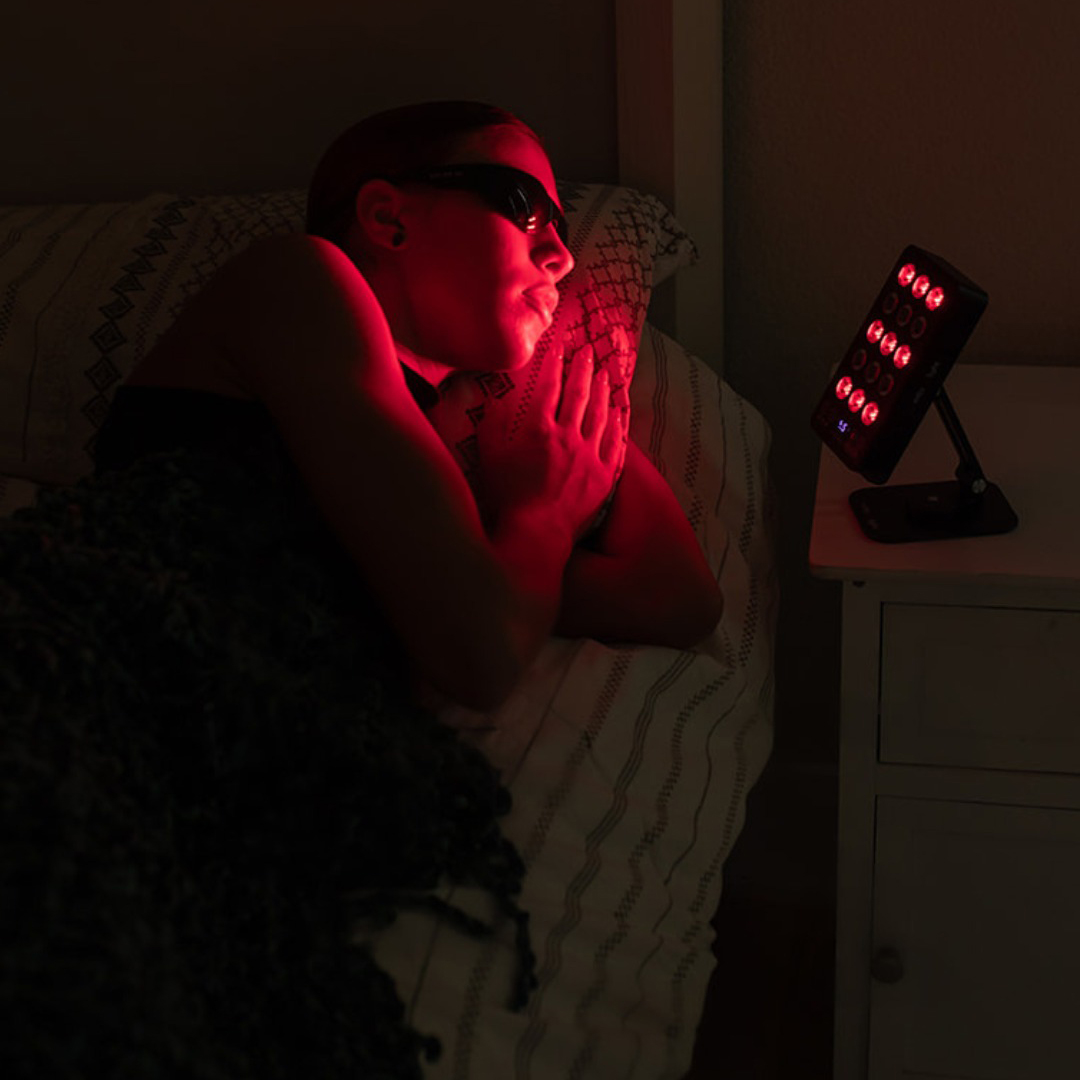![]() Free Shipping
Free Shipping ![]() Buy Now, Pay Later
Buy Now, Pay Later ![]() Eligible
Eligible
Red Light Therapy for Crohn’s Disease: A Soothing Light for a Complex Condition
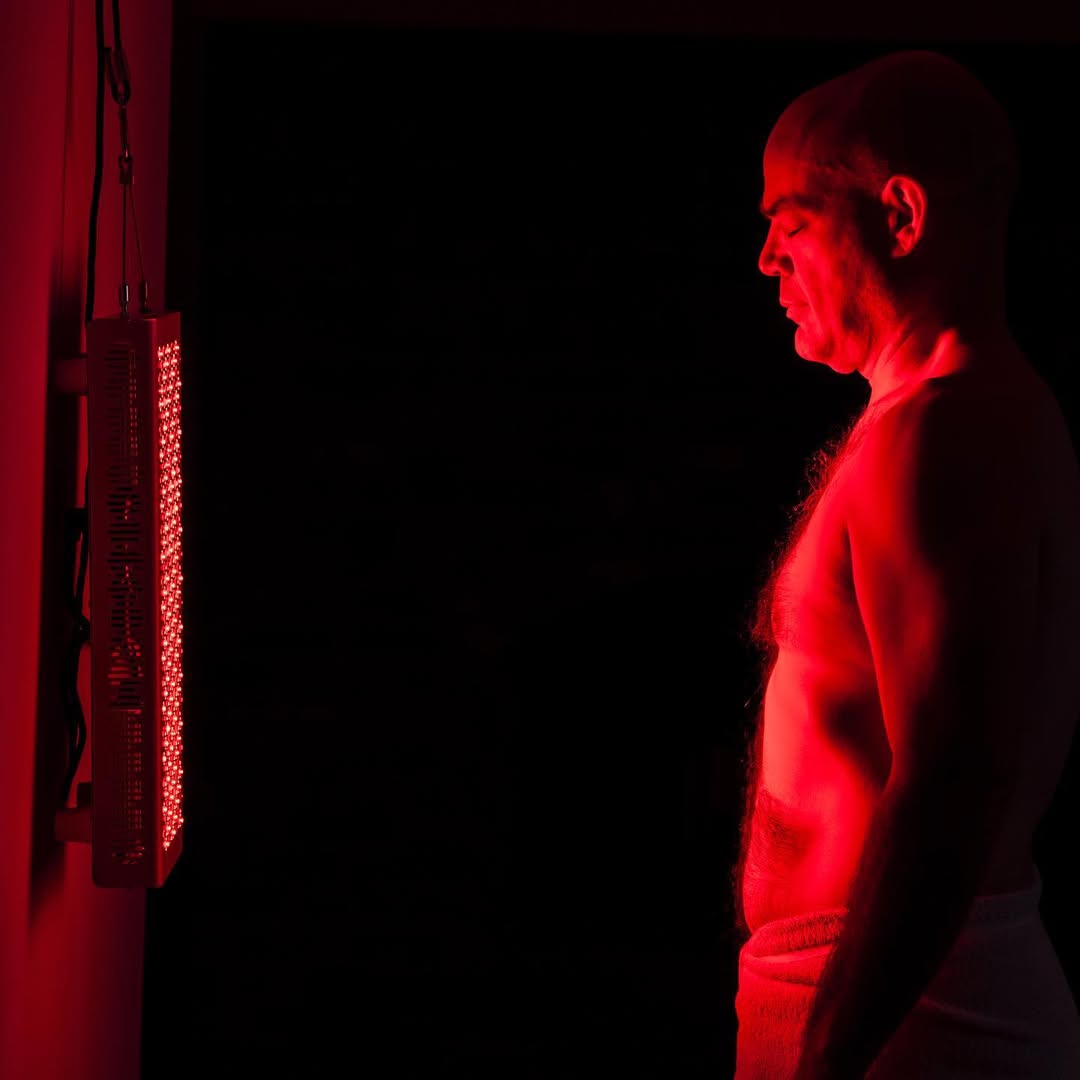
Living with Crohn’s Disease often means navigating a relentless cycle of flare-ups and remission, relying on a complex mix of medications and lifestyle changes. In the search for complementary, non-invasive ways to manage symptoms and improve quality of life, red light therapy (RLT) is emerging as a promising tool. This article delves into the science, potential benefits, and practical application of red light therapy for those battling Crohn’s.
What is Red Light Therapy?
Red Light Therapy, also known as Low-Level Laser Therapy (LLLT) or photobiomodulation, is a therapeutic technique that uses specific wavelengths of red and near-infrared (NIR) light. Unlike harsh surgical lasers that cut or burn tissue, RLT uses low-power light to stimulate healing and reduce inflammation at a cellular level.
The device doesn’t produce heat; instead, it delivers photons of light that are absorbed by the mitochondria in our cells—often called the “powerhouses of the cell.” This absorption kicks starts a biological cascade, primarily leading to an increase in adenosine triphosphate (ATP), the fundamental energy currency of the cell. With more energy, cells can function more efficiently, repair themselves, and reduce oxidative stress.
The Science Behind the Light: How Could RLT Help Crohn’s?
Crohn’s Disease is characterized by chronic inflammation of the gastrointestinal tract, driven by an overactive immune response. Red light therapy targets this core issue through several interconnected mechanisms:
1. Reducing Systemic Inflammation
RLT has been shown to suppress key inflammatory markers. It can lower the production of pro-inflammatory cytokines (like TNF-α, IL-6, and IL-1β), which are often elevated in Crohn’s patients. By calming this “cytokine storm,” RLT can help mitigate the inflammatory drive of the disease.
2. Promoting Cellular Repair and Healing
The increased ATP production from RLT provides the energy needed for cells lining the gut (enterocytes) to regenerate and repair the mucosal barrier. A stronger gut lining is crucial for preventing “leaky gut,” a condition that can exacerbate Crohn’s symptoms.
3. Modulating the Immune System
RLT appears to have an immunomodulatory effect, meaning it can help balance an overzealous immune response. It can shift the activity of immune cells from a pro-inflammatory to a more anti-inflammatory and pro-healing state.
4. Alleviating Pain and Joint Symptoms
Many Crohn’s patients experience extra-intestinal symptoms, including arthritis and joint pain (arthralgia). RLT is well-documented for its analgesic (pain-relieving) effects, likely due to reduced inflammation and improved blood flow to affected tissues.
Expert Insight: “While more targeted research in Crohn’s patients is needed, the fundamental anti-inflammatory and tissue-repair mechanisms of photobiomodulation align perfectly with the pathophysiology of Inflammatory Bowel Disease. It’s a non-pharmacological approach with a high safety profile, making it an attractive adjunctive therapy.” – Hypothetical quote from a Gastroenterologist specializing in IBD.
VELLGUS Elite V2
THE #1 RATED RED LIGHT DEVICE
Potential Benefits of Red Light Therapy for Crohn’s Patients
Based on the current scientific understanding and anecdotal reports, individuals with Crohn’s may experience several key benefits:
- Reduced Abdominal Pain and Cramping
- Decreased Frequency of Diarrhea
- Improved Healing of Perianal Fistulas (a common complication)
- Alleviation of Joint Pain and Fatigue
- Enhanced Overall Quality of Life
How to Use Red Light Therapy for Crohn’s Disease
Applying RLT for a systemic condition like Crohn’s requires a different approach than using it for a localized skin issue.
Application Methods
There are two primary methods, which can be used in combination:
- Transcutaneous (On the Skin): The light device is placed on the abdomen, targeting the area over the intestines. While red and NIR light can penetrate several centimeters, it may not reach the deepest parts of the gut. However, it can still positively affect the nervous and immune systems locally and systemically.
- Intracavitary (Inside the Body): This is a more direct approach. Emerging devices, such as vaginal or rectal probes, allow the light to be delivered closer to the inflamed intestinal tissue. This method should only be used under the guidance of a healthcare professional.
Key Parameters: Wavelength, Dosage, and Duration
Getting the dosage right is critical. Too little light has no effect, and too much can be inhibitory.
| Parameter | Recommendation | Why It Matters |
|---|---|---|
| Wavelength | Red (630-660 nm) & Near-Infrared (810-850 nm) | NIR penetrates deeper into tissue, making it ideal for reaching the gut. |
| Power Density | Varies by device; typically 50-200 mW/cm² | This measures the intensity of the light output. |
| Treatment Time | 5-20 minutes per session | Time is a key component of the total energy dose delivered. |
| Frequency | Daily to every other day | Consistency is key to building a therapeutic effect. |
| Total Energy Dose | 3-6 Joules/cm² (a common therapeutic range) | Dose = Power Density x Time. This is the most crucial calculation. |
Always refer to the manufacturer’s guidelines and consult with your doctor to determine the best protocol for your specific situation.
The Research Landscape: What Do the Studies Say?
The direct evidence for RLT in Crohn’s disease is still growing, but the existing data is encouraging.
- A 2017 pilot study published in the Journal of Crohn’s and Colitis investigated the use of an intraluminal NIR light device in Crohn’s patients. The study concluded that the treatment was safe, feasible, and showed promising signals of efficacy in reducing inflammation.
- Numerous studies on animal models of colitis have demonstrated significant reductions in inflammation and tissue damage after RLT treatment.
- Extensive research supports RLT’s effectiveness for reducing inflammation and pain in arthritis, which is highly relevant for Crohn’s-related joint issues.
A Note of Caution: Safety and Consultation
Red light therapy is generally considered very safe with minimal side effects. However, it is crucial to view it as a complementary therapy, not a replacement for your prescribed medications.
Patient Perspective: “Integrating red light therapy into my routine didn’t cure my Crohn’s, but it made a noticeable difference in my daily comfort. The intense abdominal cramping I’d get after meals became less severe, and my energy levels felt a bit more stable. For me, it’s a worthwhile tool in my management toolkit.” – Hypothetical quote from a Crohn’s patient.
Before starting RLT:
- Consult Your Gastroenterologist: Discuss your interest in RLT with your doctor. They can help you determine if it’s appropriate and ensure it doesn’t interfere with your current treatment plan.
- Choose a Quality Device: Look for medical-grade or high-quality consumer devices that specify their wavelengths and power output.
- Manage Expectations: Results can vary. Some people experience benefits quickly, while for others, it may take weeks of consistent use.
Conclusion: A Beacon of Hope
While not a magic bullet, red light therapy represents a compelling, non-invasive, and safe complementary approach to managing Crohn’s Disease. By targeting the root causes of inflammation and promoting cellular repair, it offers a potential path to reduced symptoms and an improved quality of life. As research continues to evolve, this soothing light may well become a standard part of the holistic care plan for those living with IBD.
If you are considering red light therapy, take the first step by having an informed conversation with your healthcare provider to see if it could be the right fit for you.



